Updates aplenty at the Efficient Beef Open Day
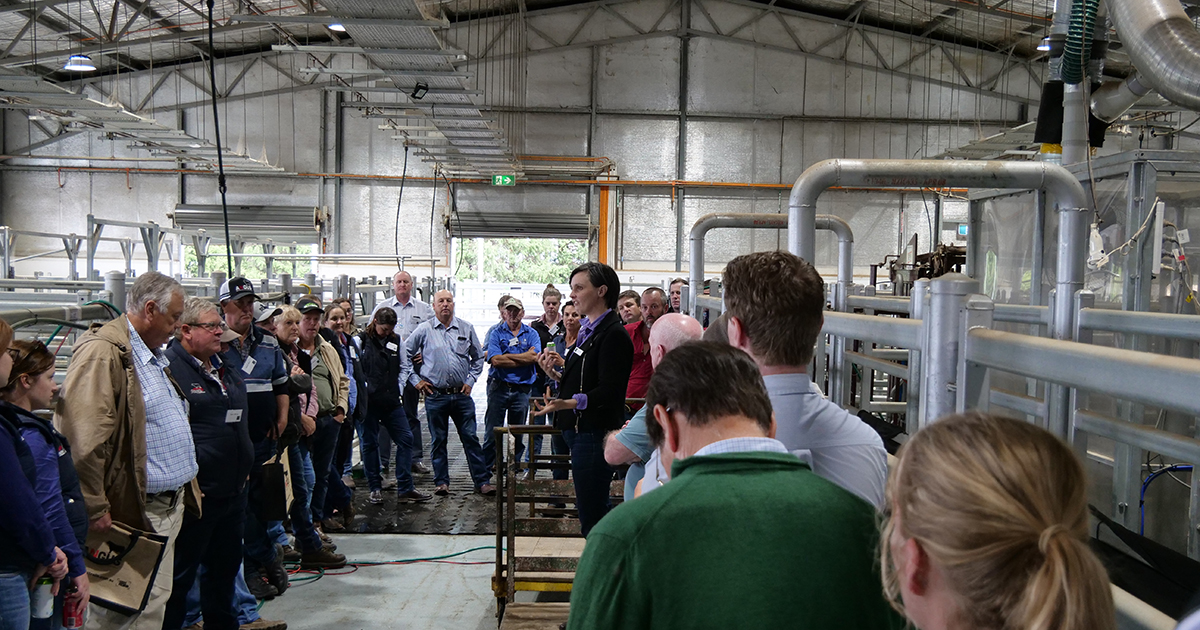

In collaboration with the University of New England (UNE) and NSW Department of Primary Industries (NSW DPI), Angus Australia hosted the Efficient Beef Open Day in November.
The Efficient Beef Open Day was host to over 100 attendees and provided updates on various research and development projects currently being undertaken involving Angus cattle around Australia, including the Angus Sire Benchmarking Program (ASBP), the Southern Multibreed Project and the Low Methane Beef Program.
“We’re here at University of New England in Armidale for the Efficient Beef Open Day,” said Dr Liam Mowbray, Angus Australia Research & Development Specialist.
“We’ve had some great updates from speakers on all things beef efficiency. We’ve been hearing about the Low Methane Beef Program, the Angus Sire Benchmarking Program, the Southern Multi Breed Project and some meat science updates.”
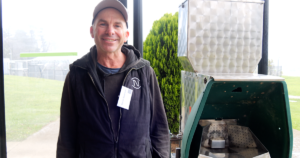
For producer Gavin Newman, Newlyn Park Angus, SA, the Open Day gave some insight into the research going into the increasingly important growth area in the industry.
“What farmers are often working towards is efficiency and getting your efficiencies as good as you can, because the more beef you can produce at the least number of emissions, really is the way to go,” he said.
“It’s encouraging to see that there are ways and developments being made to help us work towards that.”
The event kicked off with a presentation from Dr Tom Granleese, NSW DPI and Associate Professor Sam Clarke, UNE, who gave updates from the Low Methane Beef Project, and the preliminary results culminating from the work that has been undertaken in the project following the first year of recording both in pasture and in feedlot.
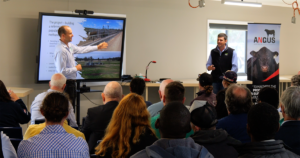
After highlighting some the results found over the course of the project, Dr Clarke mapped out what the project looks to achieve from the findings in the future, “As these results are preliminary, we will continue to update them as more results come in. “
“We will continue to record individuals over the next few years to try and get the numbers up to where they need to be to be a more usable and refined level, so that we have some precision around estimates of how much variation is genetic and how much variation is just environmental, we can estimate the correlation between traits, and the correlation with weight and feed intake.”
The next presentation was held by Dr Brad Walmsley, Livestock Research Officer, AGBU, who gave an update on the Southern Multibreed Project, which is designed to bring multibreed reference data to facilitate multibreed genomic evaluation.
Looking over the recent milestones that the project has achieved, and its preliminary results Dr Walmsley said, “The project includes nearly 7000 calves and 456 different sires. We’re managing 50 traits in the project and after calving this year it means we’ve taken over 100,000 individual phenotypes across the project.
“Six of those traits are non-standard BREEDPLAN traits that we’re looking at trying to develop to go into BREEDPLAN, and that includes full linkage projects such as that sire and immune competence.
“We’re at the stage now for the birth, calving ease and weaning traits that we’re actually able to start to push that data to ABRI to allow them to start to integrate them into the different breed evaluations as they stand now.”
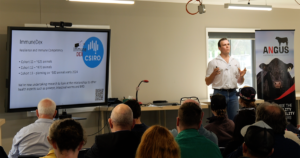
The group was also addressed by Dr Liam Mowbray who gave an update on the Angus Sire Benchmarking Program, including Cohort 11 Carcass data, Cohort 12 Net Feed Intake and focuses for the coming years.
Following this, Vytelle Australia Regional Director Australia / New Zealand Andrew Donoghue addressed the group regarding Vytelle’s involvement in the various projects featured during the event through the Vytelle Units (formally GrowSafe Units). He also provided insight into the work the Vytelle is undertaking around the world.
“Vytelle is a global company feed intake wise, it has the capacity to feed test 170,000 animals annually around the globe and IVF wise Vytelle now has 16 global labs, of which the most recent one was opened in Brisbane a couple of months ago.”
“Our locations in Australia were based on feed efficiency to start with and are now growing really quickly with the IVF side and using what we call satellite donor centres spaced out nicely to make that more accessible to all breeders that don’t have the scale to do their own.”
“The important stuff is genetic progress as it’s one of the solutions to sustainability and we can do a lot more in the beef industry. We know globally that sustainability and the focus on sustainability in traits such as reproduction, fertility, efficiency are going to be table stakes moving forward when it comes to the whole production chain and who’s operating it and where our product ends up, so it’s a really important, really high focus moving forward for the consumer and for the end users.”
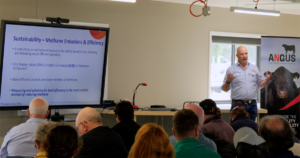
Speaking further on the IVF side of the business, Mr Donoghue said, “Everyone’s aware of the repro technologies. AI has obviously well and truly been around for a long time, as long as ET.
“With IVF, the reliability has limited its uptake in the past, however the reliability of IVF is getting better and better and it’s now a stage where you can get a lot more reliable results and produce a lot more embryos, a lot more calves, more easily and quickly than traditional flushing.
He continued, “So you are still getting the same impact from the dam and the sire for your reproduction, getting very similar conception rates between the two technologies, the big things are you can come in more often with IVF to make embryos and you can also keep cow in production.
“The genetic gain you get from technology such as IVF compared to natural mating and AI, it’s talking five times the speed of genetic game to traditional AI and natural mating.”
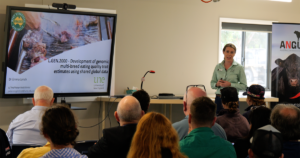
The final presentation of the day was by Dr Emma Lynch, UNE, who gave a presentation on meat science and research into meat quality currently being undertaken through the L Gen 3000 project, which is run alongside the Southern Multibreed Project and is run in collaboration with US Department of Agriculture, the Irish Cattle Beef Federation, NSW DPI, Texas Tech University, the Irish Agriculture and Food Development Authority, University of Queensland, University of Sydney and Meat and Livestock Australia.
“The first aim of this project was to look at developing a global eating quality reference data set from which genomic estimated breeding values can be calculated from multiple breeds,” said Dr Lynch.
“Our next thing was can we look at the effectiveness of this genomic data in predicted eating quality outcomes.
She continued, “The last thing we have to do a comparison because we all like knowing what our breeding values are here in Australia compared to the rest of the world and certainly how that can correlate.”
Highlighting the different variables that research understands can affect the eating quality of meat, Dr Lynch gave insight into the work being undertaken in their project in order to establish whether an EBV can be developed for eating quality and what work in this space is currently being undertaken through a number of different research tests from the meat of animals coming out of the Southern Multibreed Project.
“We obviously are taking all the MSA data, but we also took samples for iron and shear force and run that through the lab. All those samples were aged for 14 days postmortem before they were processed,” she said. “Then we had samples for our consumer sensory analysis as well, because we need to be able to get some more eating quality data to be able to pop back into model.”
 Sampling some the meat coming out of this research was the Open Day attendees, who were all served a steak lunch produced from the project.
Sampling some the meat coming out of this research was the Open Day attendees, who were all served a steak lunch produced from the project.
“For lunch, we were served some sirloin steak which has come directly from the Southern Multibreed Project, and we got to then look up which individual animal that the steak came from and the data that was associated with that, so it was really awesome to have a nice eating experience and then find out what genetics that was and where it’s come from,” said Dr Mowbray said. 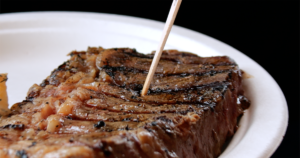
Thanks to much needed rain in the New England region, the Open Day was relocated to the UNE campus, which also allowed the group access to the methane chambers at the Centre for Animal Research and Teaching. The methane chambers found at the UNE facility are some of the largest in the world, and in turn are widely used internationally for leading research and development in the space of methane emissions.
“Last up, we got to have a really in-depth tour of the methane testing facility here at UNE, learning all the latest and greatest tech in methane testing and where that’s heading as an industry,” said Dr Mowbray.
Guiding the tour was Associate Professor Fran Cowley UNE, who highlighted the research being undertaken in the facility.
“What we are mostly using the chambers for is around testing nutritional interventions or infeed supplements to actually inhibit methane production in the rumen.”
– Cheyne Twist, Senior Marketing & Communications Officer
Feature image: Associate Professor Fran Cowley UNE conducting the tour of the methane testing facility.